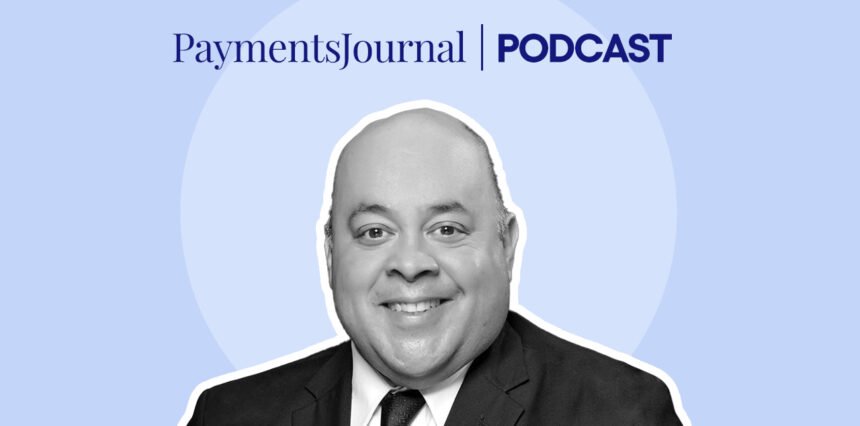After years of restrictions and uncertainties, people are eager to travel the world again, whether for leisure, business, or reconnecting with loved ones. As a result, international travel is getting back to—and in some cases even surpassing—pre-pandemic levels.
Dynamic Currency Conversion, or DCC, is making the travel experience more seamless. On a recent PaymentsJournal podcast, Ed Robles, Senior Director of Sales, Business Development at Euronet Worldwide, spoke with Albert Bodine, Director, Commercial and Enterprise Payments at Javelin Strategy & Research, about how simplifying currency management can create new revenue opportunities for financial institutions.
PaymentsJournal
Reinventing Currency Exchange for Global Travelers
PaymentsJournal Reinventing Currency Exchange for Global Travelers
Finally, Transparency in Currency Exchange
Travelers today expect to manage their finances abroad with the same ease and convenience they enjoy at home. Historically, this has been a challenge given the range of currencies international travelers have to deal with and the limited number of exchanges available. DCC is changing that.
DCC, which is offered at ATMs and point-of-sale terminals, allows international travelers to pay or withdraw money in their home currency instead of the local currency. Essentially, when a traveler uses their credit or debit card abroad, they’re given the option to convert the transaction into their home currency at the point of sale. Travelers can lock in the exchange rate at the time of the transaction, avoiding the uncertainty of fluctuating rates.
One primary benefit is transparency. Travelers can see the exact amount they’re spending in a currency they understand, which helps with budget management and eliminates the guesswork of exchange rates. DCC also provides a better exchange rate compared to traditional currency exchanges, reducing the overall cost of foreign transactions.
“If you are withdrawing pesos in Argentina and you don’t know what the conversion rate was, DCC will convert and provide the rate for you,” said Robles. “You have the option as the cardholder to accept or deny the transaction based on the conversion. If you accept, your receipt will give you exactly the same numbers you’ve seen on the screen, so you know what you paid for in your home currency, even though the money you’re withdrawing is the local currency.
“As it gets back to your bank, that same amount will be on your statement at the end of the month,” he said. “You don’t get hit with international fees or any other conversion fees.”
One common difficulty travelers face is the high fees associated with withdrawing cash abroad, along with fluctuating exchange rates that make it hard to know exactly how much they’re spending. Finding ATMs that accept their cards and offer reasonable rates can be an added inconvenience and time-consuming.
“At Javelin we analyzed some of the routes around the world,” Bodine said. “We found that if you were to send $200 through traditional correspondent banking means, in some cases that would cost you $104 in fees on one of the routes. You’re talking about 52% of the transmitted amount in fees that the intermediaries are taking.”
“I remember the days where, whether it was for a personal transaction or even a business transaction, cash was required, and we had to partake in some type of hedging activity,” he said. “I love the transparency aspect of dynamic currency conversion, where you can see the fee structure on the front end, and the cost that it drives down.”
Reversing the Transaction
On the other hand, some travelers may have leftover local currency as they prepare to return to their country of origin. While not yet widely available, technology exists to convert foreign currency back to dollars or another home currency. Euronet is in the process of certifying certain ATM models to handle this conversion.
Robles pointed out that this is an important service for overseas travelers to avoid the double whammy of currency exchanges. “We get hit by a 17% to 20% conversion rate at the airport kiosk,” he said. “When we want to exchange it back to our local currency, we get hit again.”
Benefits for Financial Institutions
For financial institutions and merchants, DCC brings several advantages. By enhancing customer satisfaction and providing a valuable service, it can lead to higher transaction volumes as customers are more likely to use services that offer transparency and convenience. Moreover, financial institutions and merchants can find additional revenue streams through better exchange rate margins and increased usage of ATMs and POS terminals.
Euronet recently noticed an emerging trend after reviewing reports with one of their clients. They noticed a significant number of exchanges involving the Australian dollar in a particular area with a large Australian population. Euronet notified the bank, which then notified their merchants.
One of the merchants, a restaurant, decided to incorporate an Australian beer into their menu and advertised it to the local community. As a result, Australians started coming to the restaurant for dinner, drawn by the familiar offering.
“And the way that happened was through the DCC analytics that we provide our customers,” said Robles. “By noticing that there were a lot of Australians in the area, ready to spend money, their revenues went up.”



















